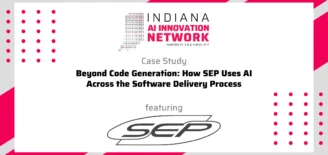Five Acronyms Affecting Mobility’s Future
Keeping up with dozens of enterprise mobility terms is tough to do. Understanding their importance and how they impact industry trends is even harder. Without an expert resource to rely on, this seemingly endless stream of acronyms can overwhelm even the most tech-savvy organizations.
There are new terms and technologies being created everyday — which do you need to focus on? Here are five soon-to-be-familiar acronyms and how they’re changing the future of the enterprise mobility industry:
AI – Artificial Intelligence
As businesses increasingly automate processes and seek efficiency gains, AI has become a major enterprise technology focus in recent years. Mobile devices, when combined with machine learning, are being designed to autonomously perceive environments, take actions, and learn from the results with minimal (if any) human interaction in-between.
Today, hardware manufacturers like Apple, Google, and Microsoft are incorporating this cutting-edge technology into smartphone virtual assistants. While most companies initially viewed virtual assistants as consumer-focused, there has been a recent push by some to incorporate Cortana, Siri, and/or the Google Assistant into corporate mobile strategies. While it’s still early, the initial feedback has been encouraging. Multiple enterprises have saved time, reduced errors, and improved employee efficiency by leveraging virtual assistants.
IoT – Internet of Things
IoT is the hottest topic in today’s enterprise mobility discussions. While the explosive growth of these connected, data-only devices may have initially been exaggerated, organizations continue to rapidly integrate these technologies. By 2018, there will be more active IoT devices than mobile phones worldwide.
Enterprises are leveraging connected devices to capture never-before-seen data. In the near future, carrier call details will become the next rich IoT data source. For the first time ever, organizations will be able to analyze these records for employee usage patterns and correlate them to business success. These data points will also empower analytics efforts and company decision-makers.

MNO – Mobile Network Operator
As mobile technology evolves, MNOs are making changes and adjusting services accordingly. Outside the United States, it’s already common practice for wireless carriers to decouple network service from hardware purchases — expect domestic providers to do the same sooner rather than later. While this may cause short-term sourcing and procurement issues for your business, eventually it will lead to new program freedoms and more optimization potential than ever before.
MNOs will also become much more relevant to stationary devices. More and more, network operators are identifying IoT as a lucrative sub-market and creating customized data plans to fit these devices’ usage. Unlike smartphones, however, IoT requires minimal network bandwidth and is extremely tolerant of latency. Moving forward, wireless providers will need to learn how to help businesses optimize program data services around cost instead of speed.
RMAD – Rapid Mobile Application Development
Recent years have seen a rise in RMAD and citizen developers. Thanks to low- and no-code development platforms, people with little or no programming knowledge are now capable of building functional, secure mobile apps. It won’t be long before organizations begin to leverage this technology and internalize all enterprise app development.
UEM – Unified Endpoint Management
Through a combination of people, processes, and technology, UEM secures and effectively manages mobile device lifecycles and wireless network accessibility. As mobility converges with legacy Information Technology (IT), however, things are changing.
Dozens of vendors now compete within the UEM space, leading to accelerated market maturity and specialization. Cheaper, more specialized software products will soon begin to emerge, forcing companies to reevaluate current solutions and potentially use multiple UEMs to satisfy their unique program needs.
What other enterprise mobility acronyms does your business need to know? Download the Enterprise Mobility Acronym Glossary today and find out!
About the Author
 Josh Garrett is responsible for the technical vision and direction of the company, as well as the Solutions Architect Group, which works with customers on each MOBI implementation. Josh is actively involved in many aspects of the sales, operations and technical elements of the company and frequently meets with current and potential customers to understand their needs in the marketplace.
Josh Garrett is responsible for the technical vision and direction of the company, as well as the Solutions Architect Group, which works with customers on each MOBI implementation. Josh is actively involved in many aspects of the sales, operations and technical elements of the company and frequently meets with current and potential customers to understand their needs in the marketplace.


